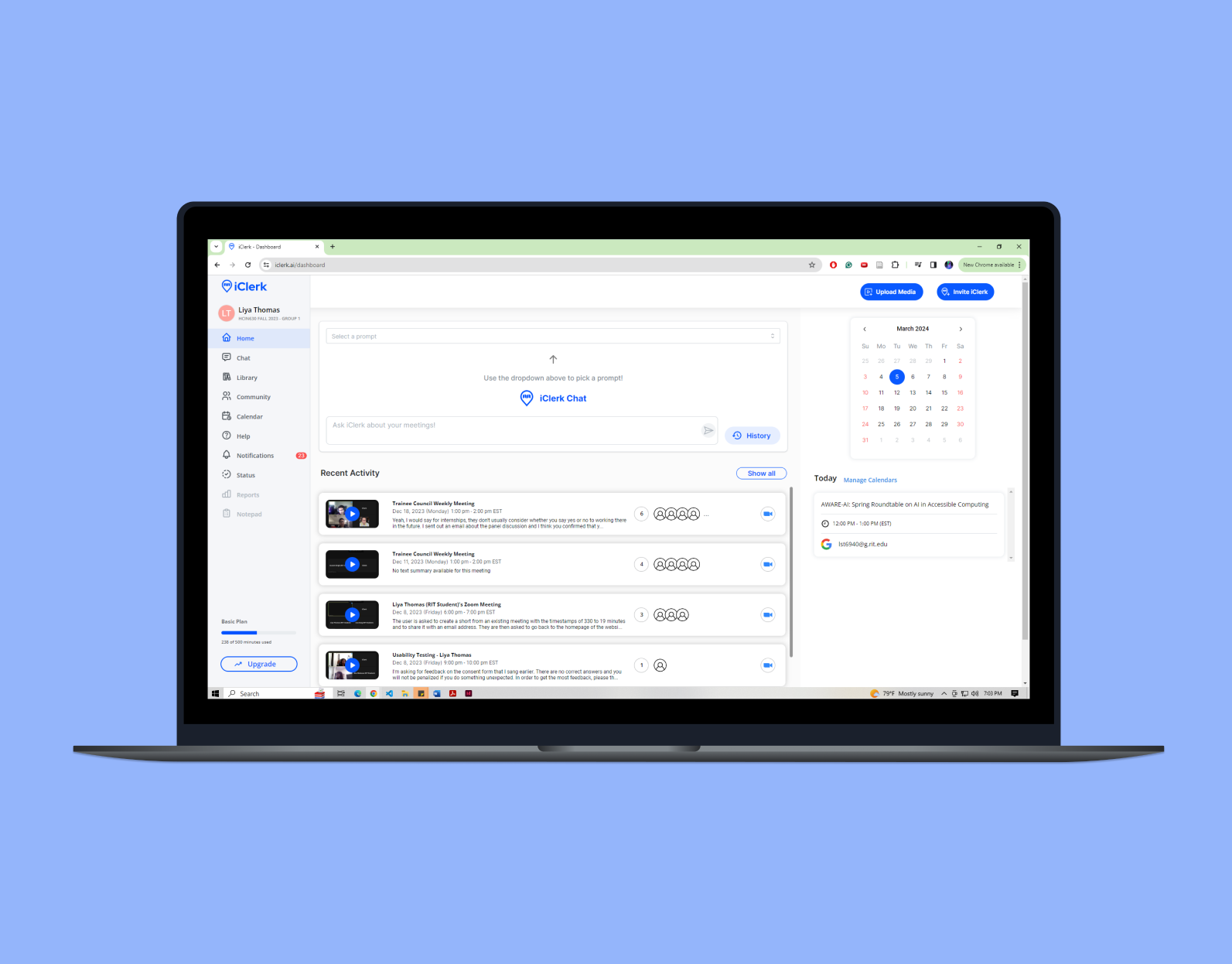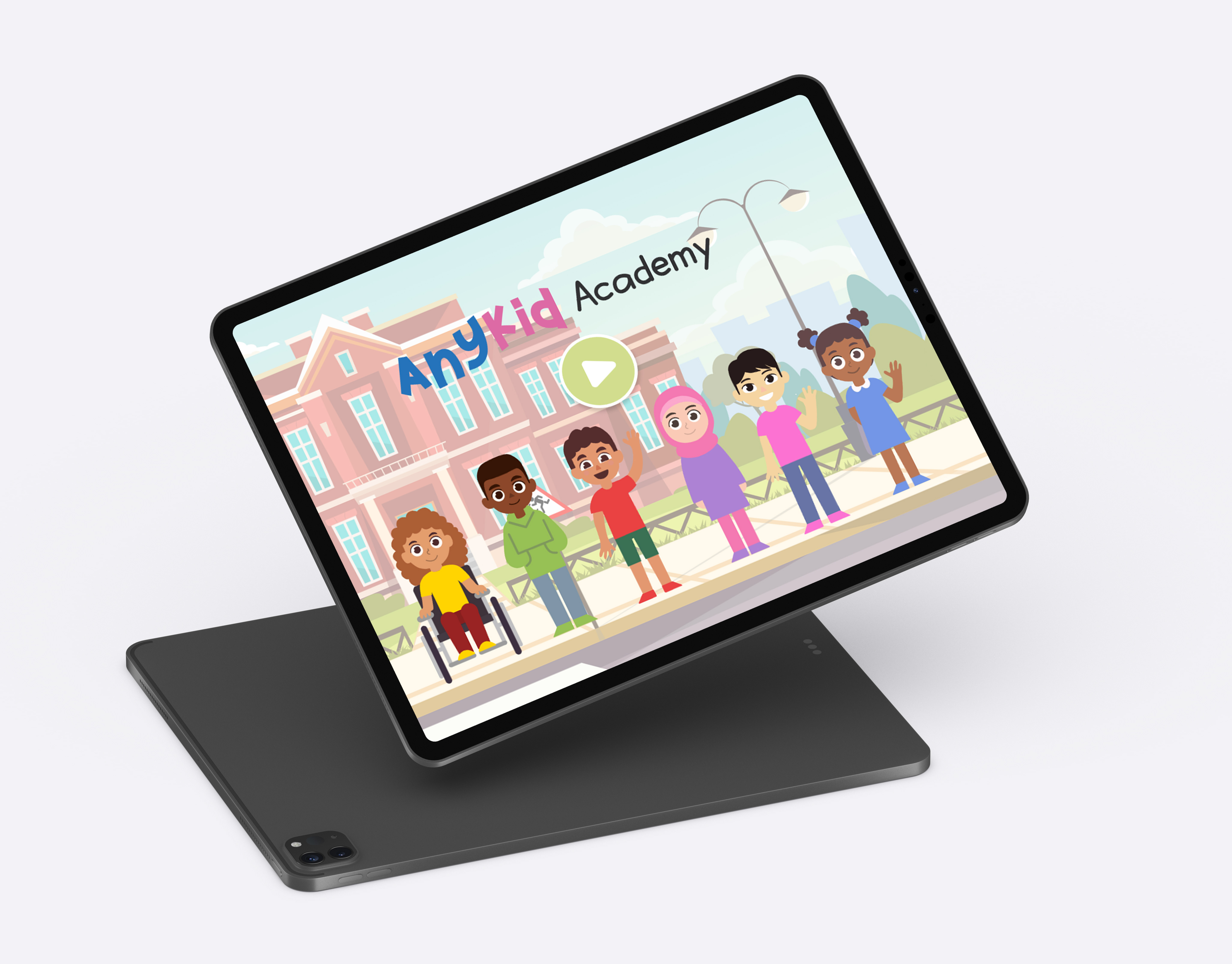Stacks is a family dining set designed to aid in food tolerance training in children. This project showcases my knowledge in both qualitative and quantitative research methods.
Timeline: 8 Weeks
Team: Liya Thomas, Mariyana Keymolen, Alexa Baeza
My Role: UX Research, Conducting Interviews, Observation, Diary Log, Analyzing Data, User Texting, Product Design
Project Introduction
Problem:
A feeding disorder is a condition in which children avoid eating or limit what or how much they will eat. 8 out of every 10 children with special needs have a feeding disorder. Typically children can refuse to eat a food because of its color, texture, or smell.
Research Questions:
What methods of therapy currently exist to combat feeding disorders in children with special needs?
What actions do parents of children with special needs take to address feeding disorders at home?
Research Goals:
• Discover various types of therapy and actions taken to combat feeding disorders in children with special needs.
• Understand and identify gaps in the current market of tools and toys used for feeding therapy and eating.
• Create a product that can aid in feeding therapy for children with special needs.
Methods
A variety of qualitative and quantitative research methods were used throughout the project including a structured interview, survey, food log diary, and user testing.
Structured Interview Summary:
A Structured interview was conducted with 2 pediatric occupational therapists over email to learn about various therapy methods used for feeding disorders. The questions were sent to them and they sent back the answers.
Top 3 Therapy Methods:
1. Tools that mimic food:
Silicone and plastic textured tools are used to desensitize a child's mouth and build tolerance to various feelings (Figure 1).
2. Sequential Oral Sensory (SOS) Approach
The SOS feeding approach has 32 steps that introduce foods in a controlled sequence. Figure 2 shows 8 steps to summarize the 32 steps.
3. Food tolerance training at home
Parents introduce new foods in small amounts during every meal.
Insights:
Progress is faster when parents continue therapy practices at home.
Recommendations from occupational therapists to parents:
• Set a routine
• Be prepared to waste food
• Expose kids to food in as many ways as possible: cooking, discarding their leftovers
• Make eating fun with games or shapes
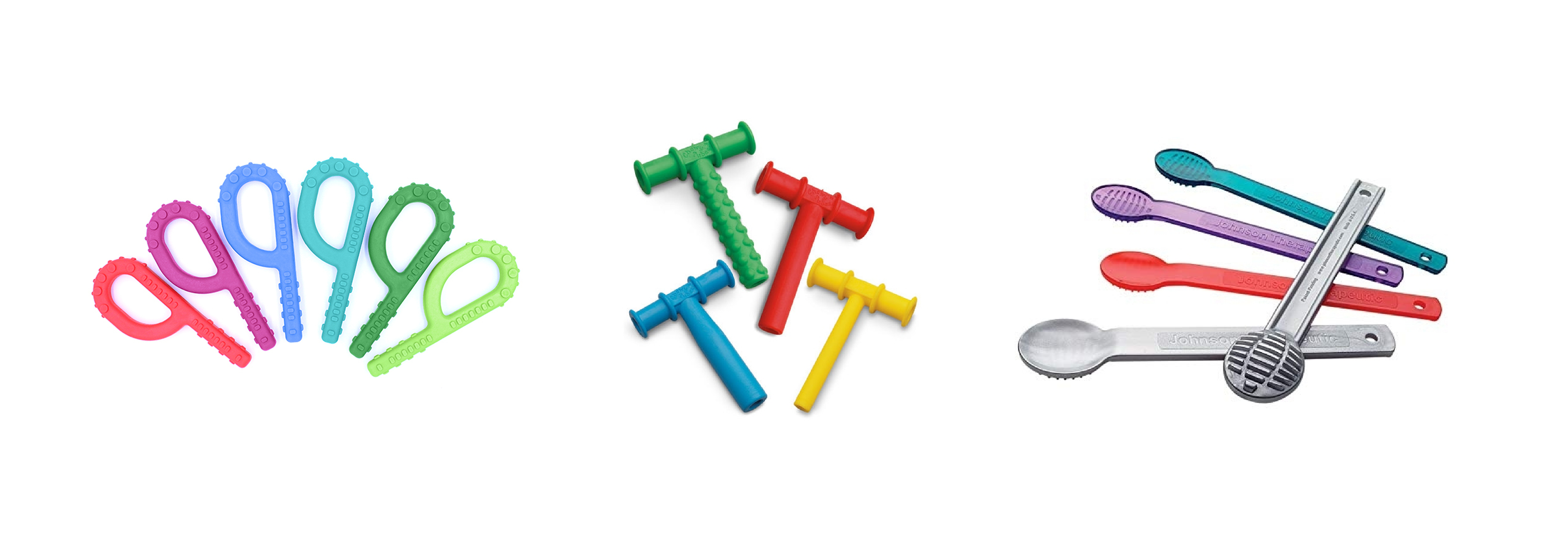
Figure 1: Sensory Tools
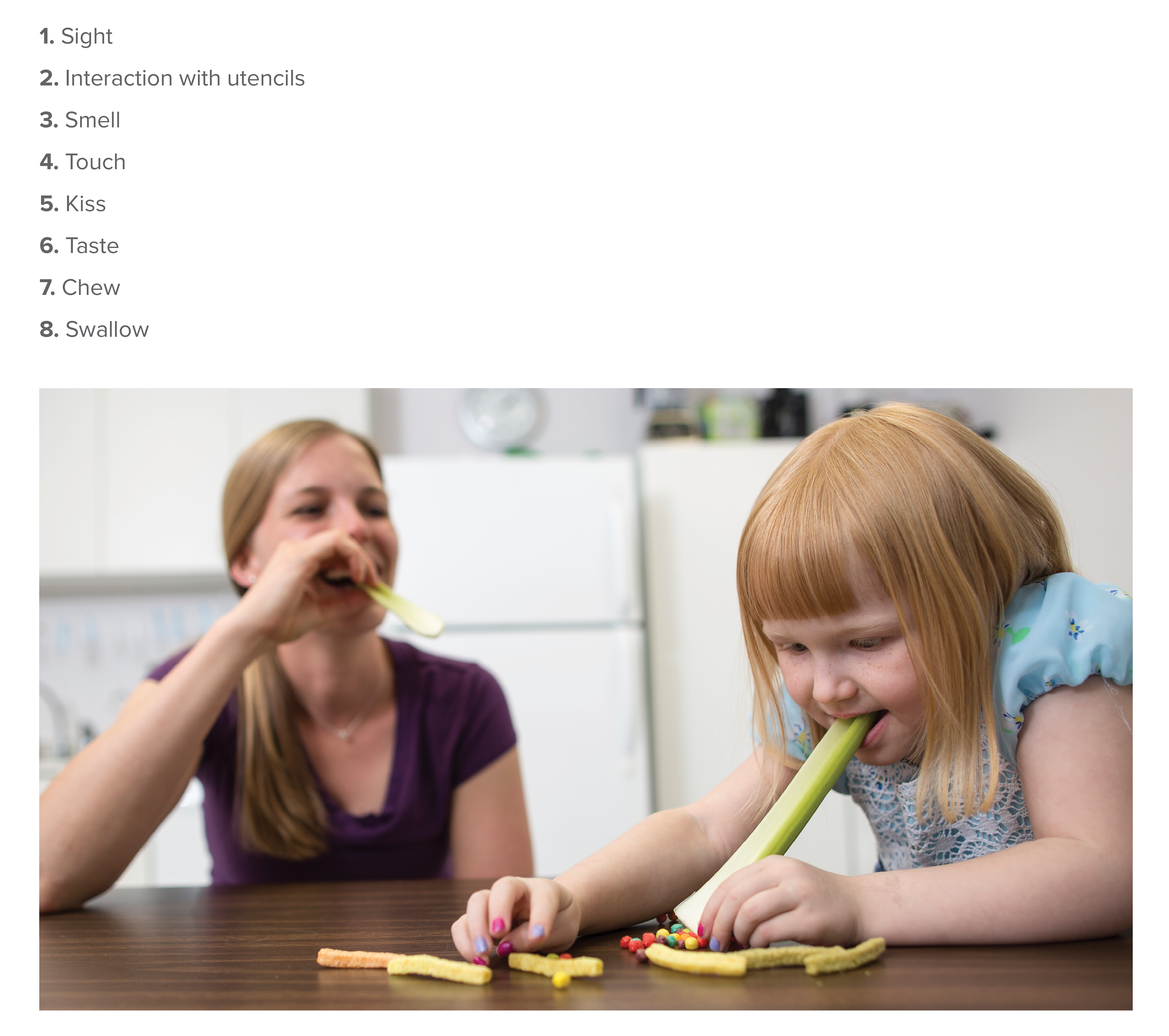
Figure 2: Summarized SOS Approach
Survey Summary:
After learning from occupational therapists what parents should be doing to continue feeding therapy at home, a survey was conducted to find out what parents were doing. This survey was for parents with special needs children who have a feeding disorder.
Survey Results:
The first question asked whether parents had a routine when it came to feeding their children.
Figure 3 shows that 50% of the parents had a routine and 50% did not have a routine.
The next question asked what methods were used by parents with and without routines to get their kids to eat. The options were: Giving children foods they will eat, Distracting children with a tablet or toys, giving a reward food, and making meals interactive.
Figure 4 shows the results for parents without routines. A majority of parents gave their children foods are known to like rather than introducing new foods.
Figure 5 shows the results for parents with routines. A majority of parents made meals interactive.
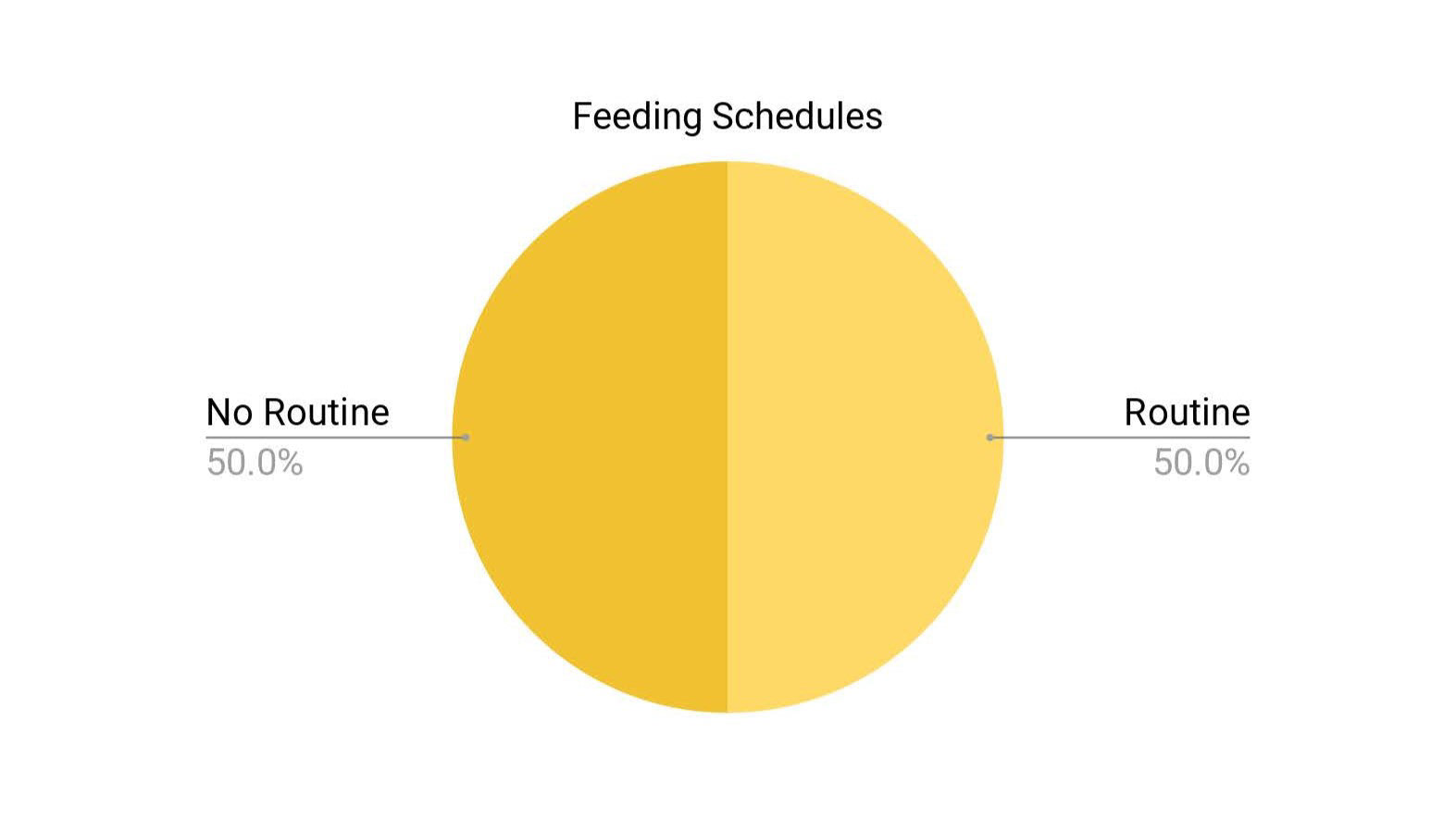
Figure 3: Feeding Schedules
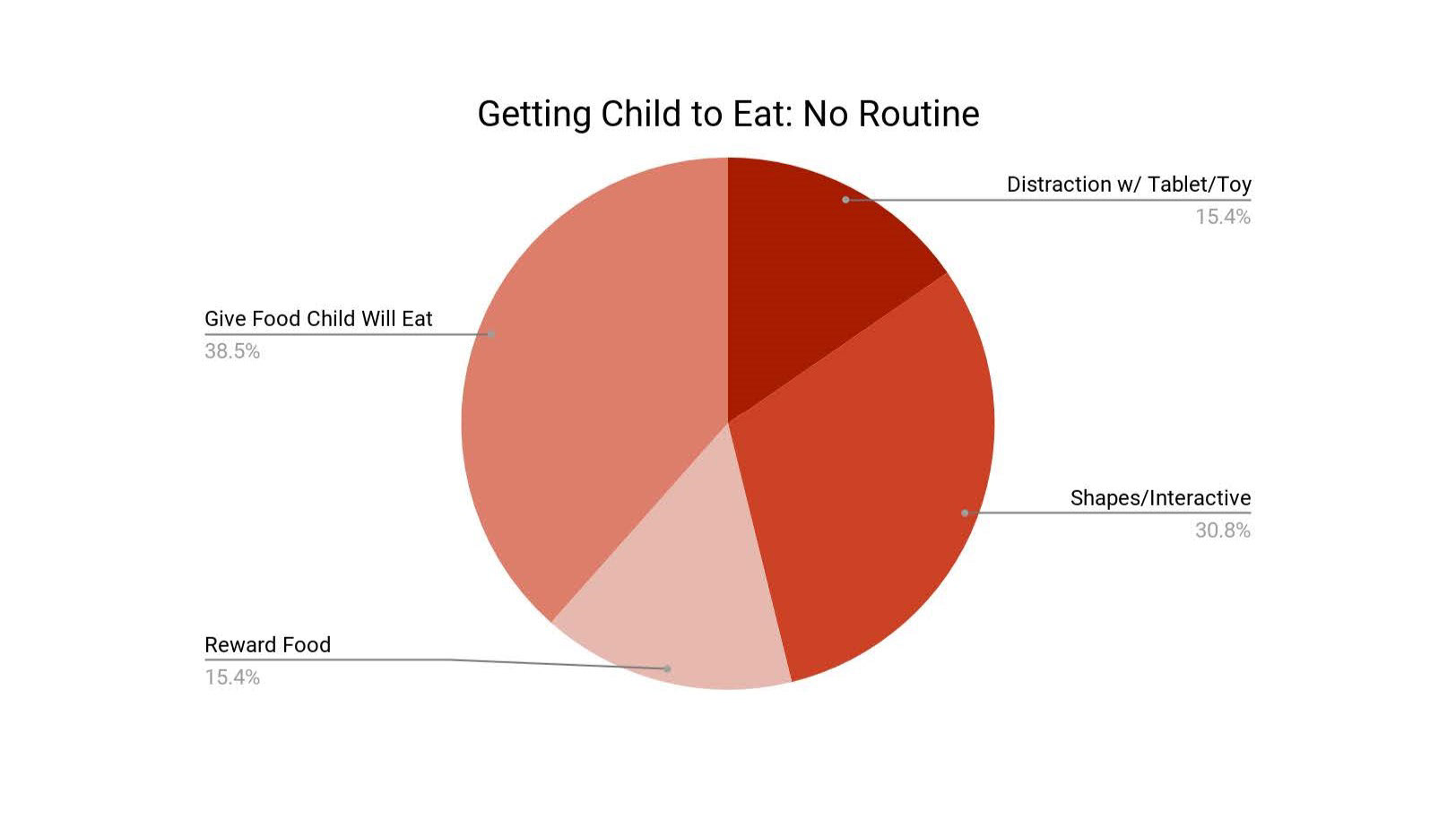
Figure 4: Methods for No Routine
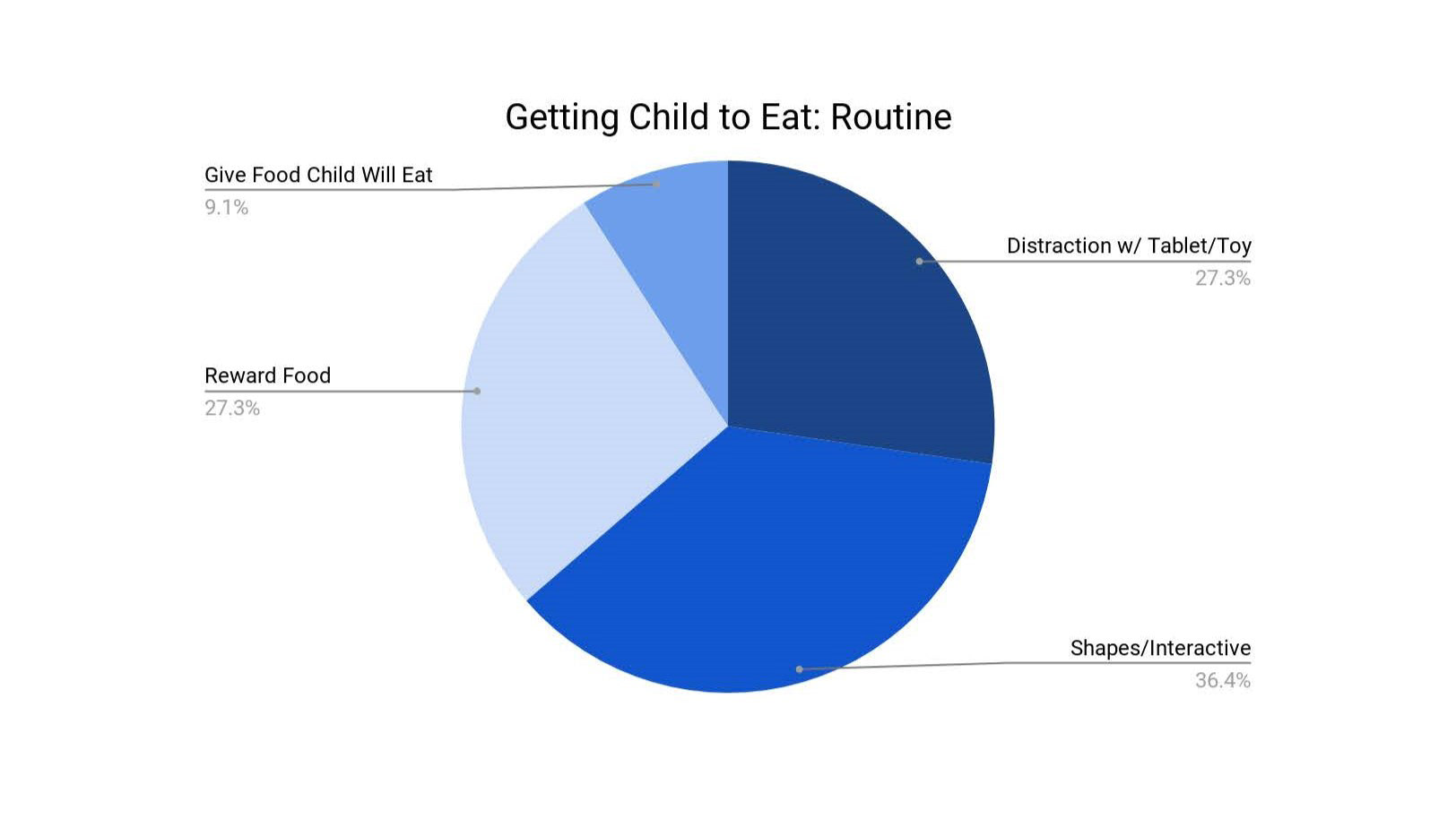
Figure 5: Methods for Routine
Food Log Diary Summary:
A parent from the survey who conducts food tolerance training (slowly introducing new foods) at home was asked to keep a diary of all the foods she fed her child throughout one week. The diary was completed as a Word Document. The parent inserted pictures of every meal before and after the child ate and described the meal and her child's reactions and feelings towards the meal (Figure 6).
Insights:
New foods are not introduced at breakfast because it can be a stressful process. Typically the child is given foods she likes to ensure she is well-fed before school (Figure 7).
When introducing new foods, they are given in small amounts. A spit bucket is provided in case the child wishes to spit out the new food and a reward snack is also given (Figure 8).
Even when the child eats fast food, newly introduced foods are also given to continue food tolerance training (Figure 9).
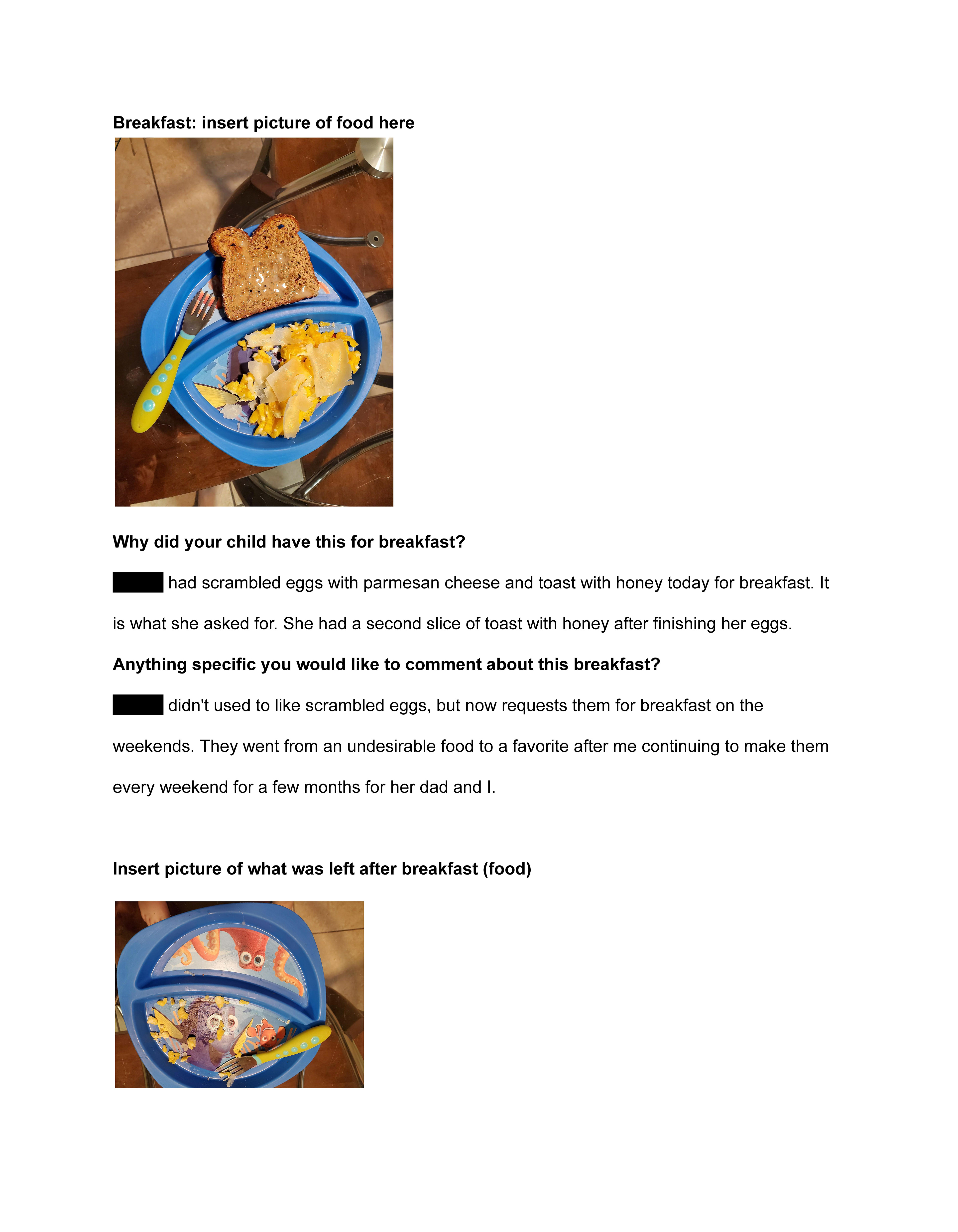
Figure 6: Food Diary Log
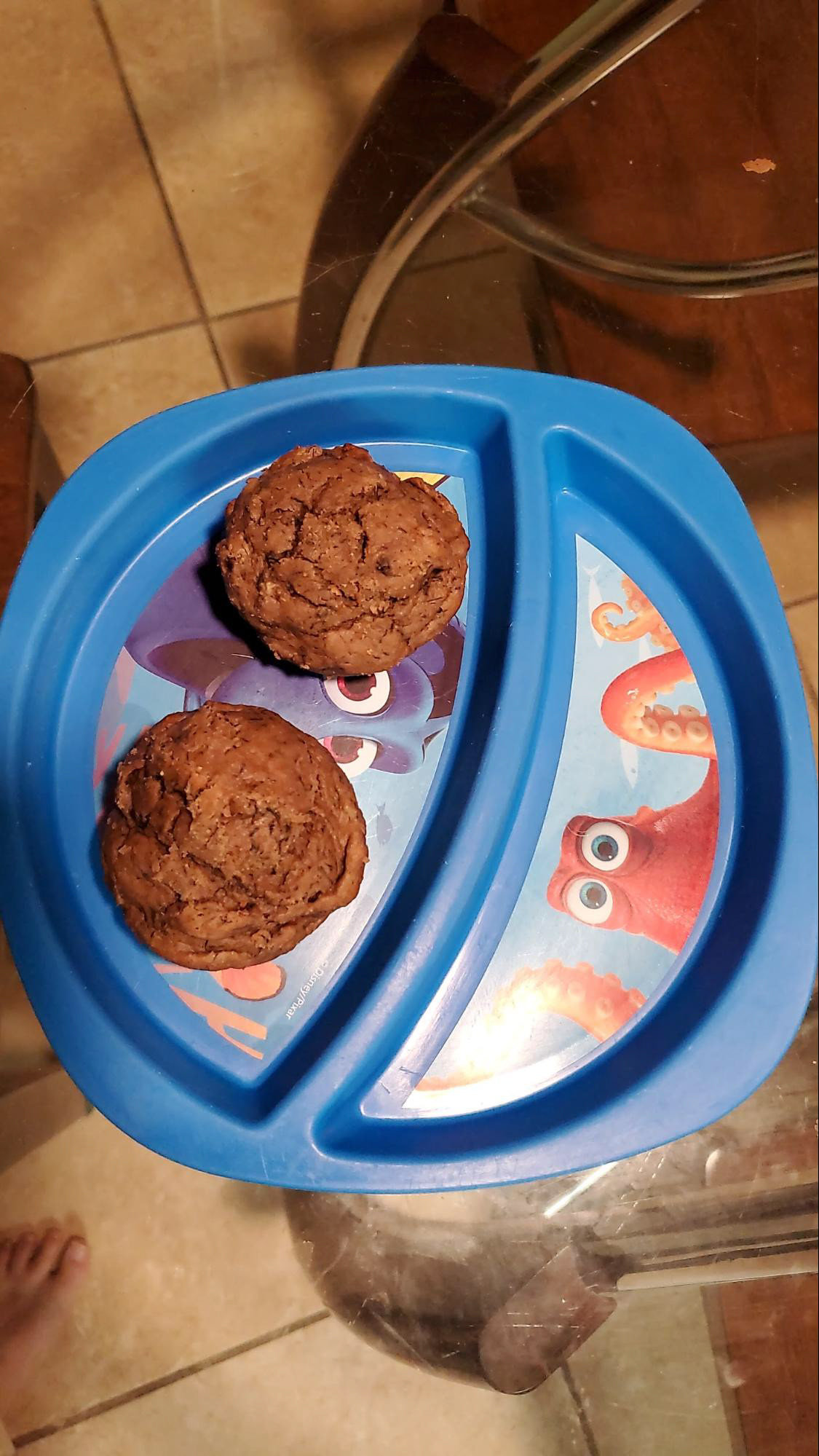
Figure 7: Breakfast (Banana Nut Muffins)
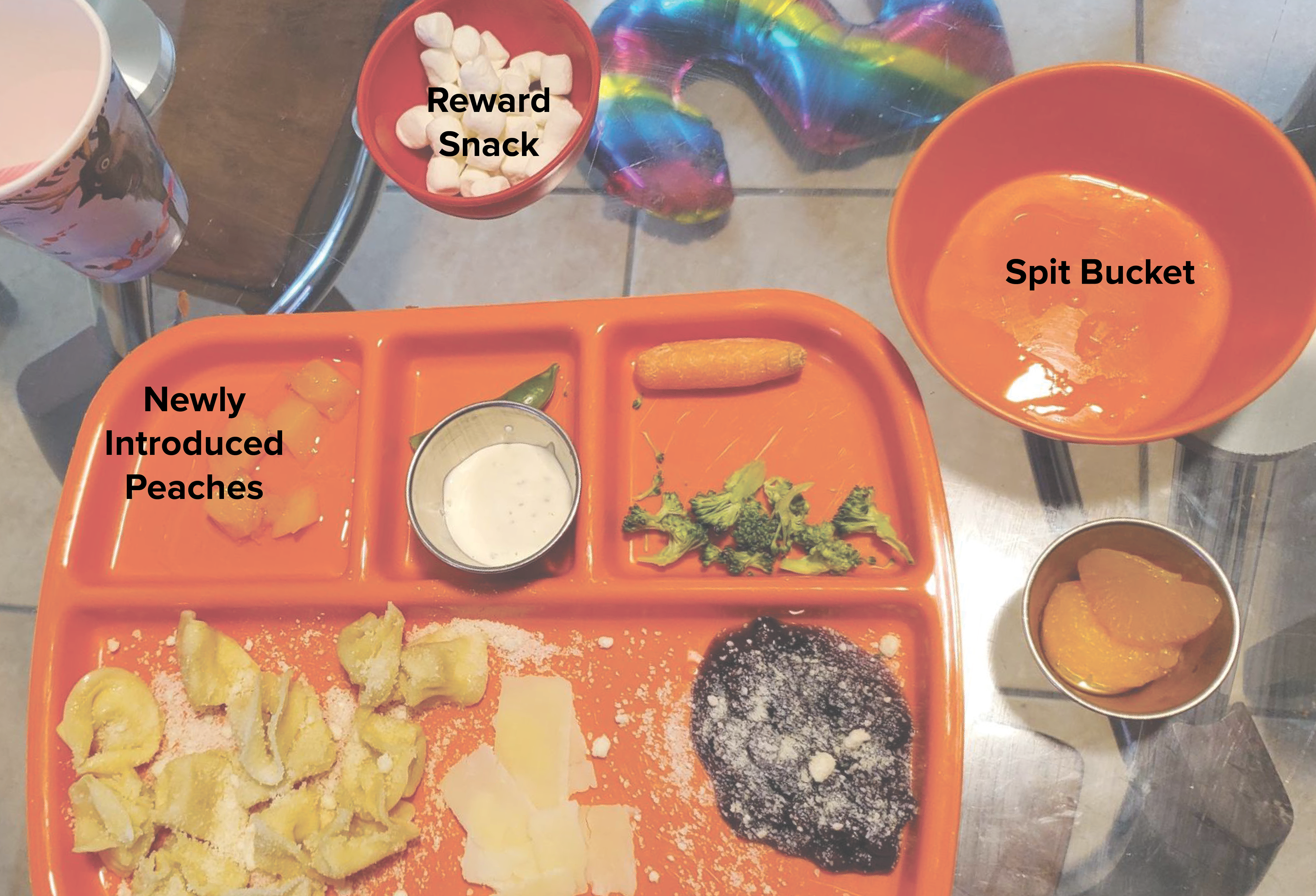
Figure 8: Food Tolerance Training Set-Up
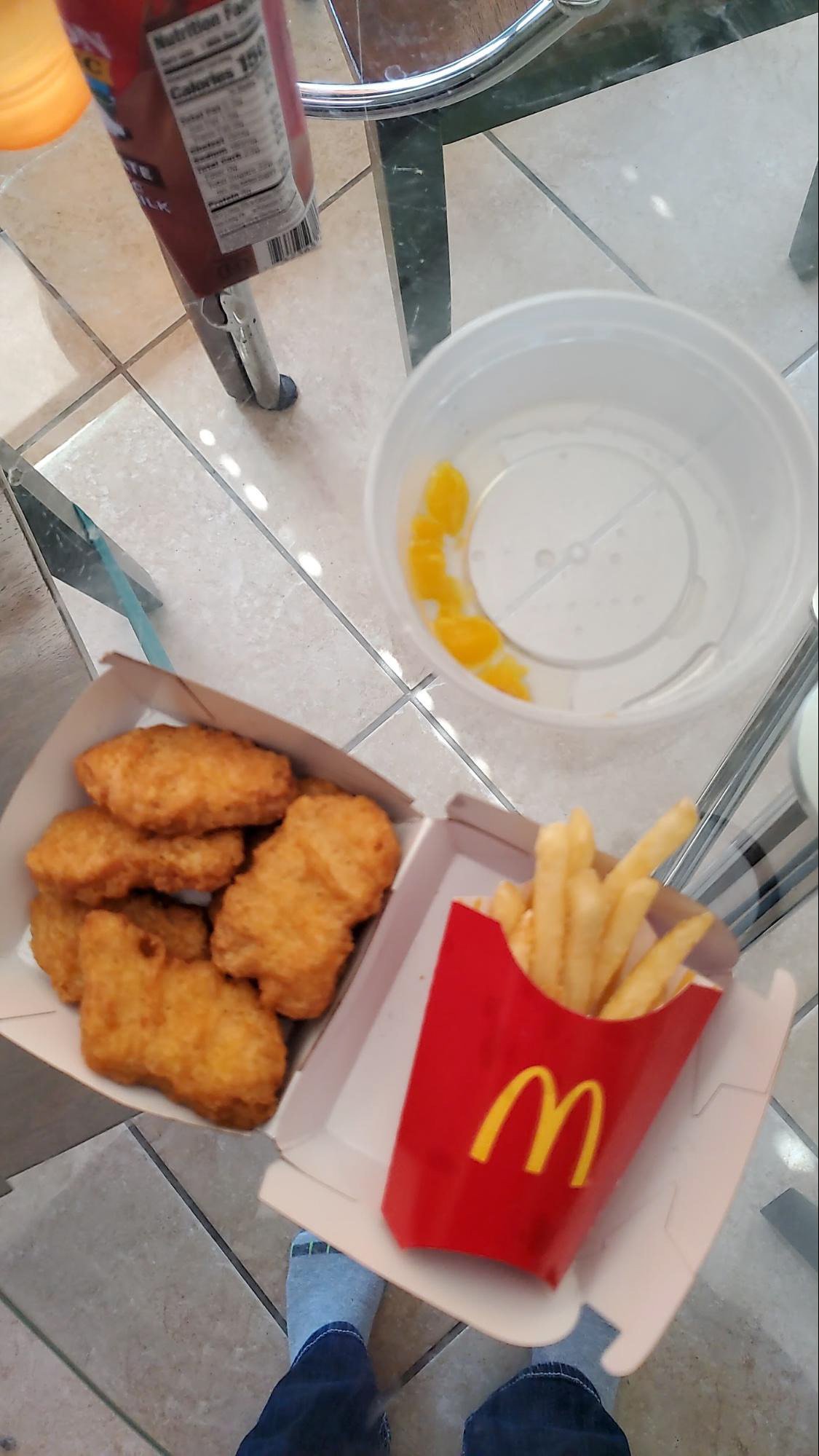
Figure 9: Fast Food with Peaches
Data Analysis
Affinity Diagram:
Using Post-it notes, contents from the interviews, survey, and food diary were mapped out and grouped based on similar components. The x-axis went from sensory to motor training and the y-axis went from independent eating to dependent eating (Figure 10).
Opportunity Gaps and Findings:
Then images of current products on the market were laid over to identify opportunity gaps; circled in Figure 11.
The following findings were identified in the blue circle
1. There is an ample amount of information that shows parents how to do home therapy, yet there are not many existing products that aid parents in continuing therapy at home.
2. Occupational therapy should be continued at home, but it is not due to emotional stress on parents and limited time.

Figure 10: Affinity Diagram
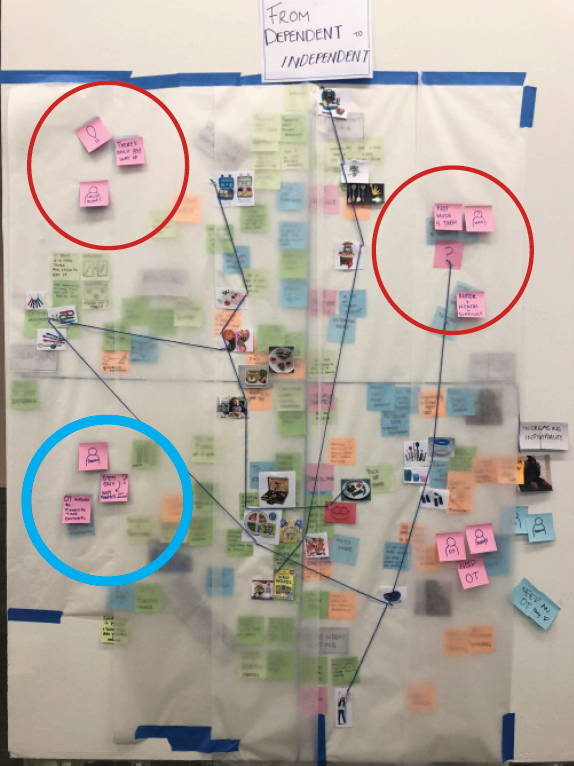
Figure 11: Opportunity Gaps
Prototyping
The findings from the data analysis were used to create a physical product that aids in food tolerance training at home for special needs children with feeding disorders.
Ideation Sketching
Inspired by the current market, the ideation sketches for this project fall into 3 categories, games & toys, cooking, and interactive eating.
Iteration Sketching
The ideal area for products is combining toys & games with interactive eating.
Low-Fi Prototype and User Testing
The first prototype (Figure 12) is a plate set that is also a puzzle. It was shown to 2 children ages 4 and 7. They enjoyed the puzzle and began creating their own images other than the set puzzle (Figure 13). More freedom should be given to the user.
The second prototype (Figure 14) is a plate set that can be stacked vertically or arranged on the table to make various shapes and figures. The prototype was shown to the mother and child from the food diary log. The mom suggested the prototype plates should have smaller sections than the toddler plate shown in Figure 15 which is too large. The child loves legos and wanted more variety with the shapes of the prototype plates.
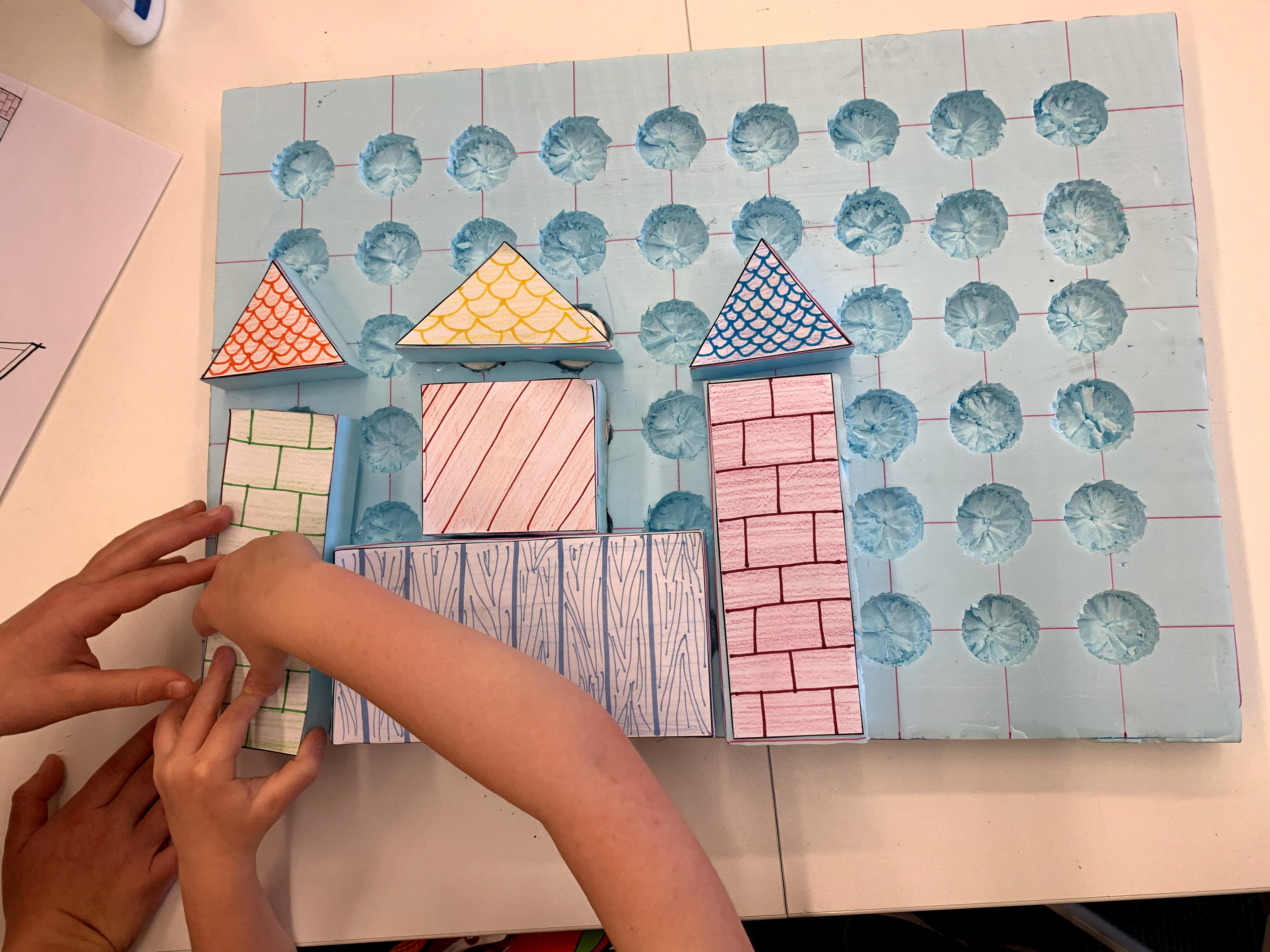
Figure 12: Prototype 1
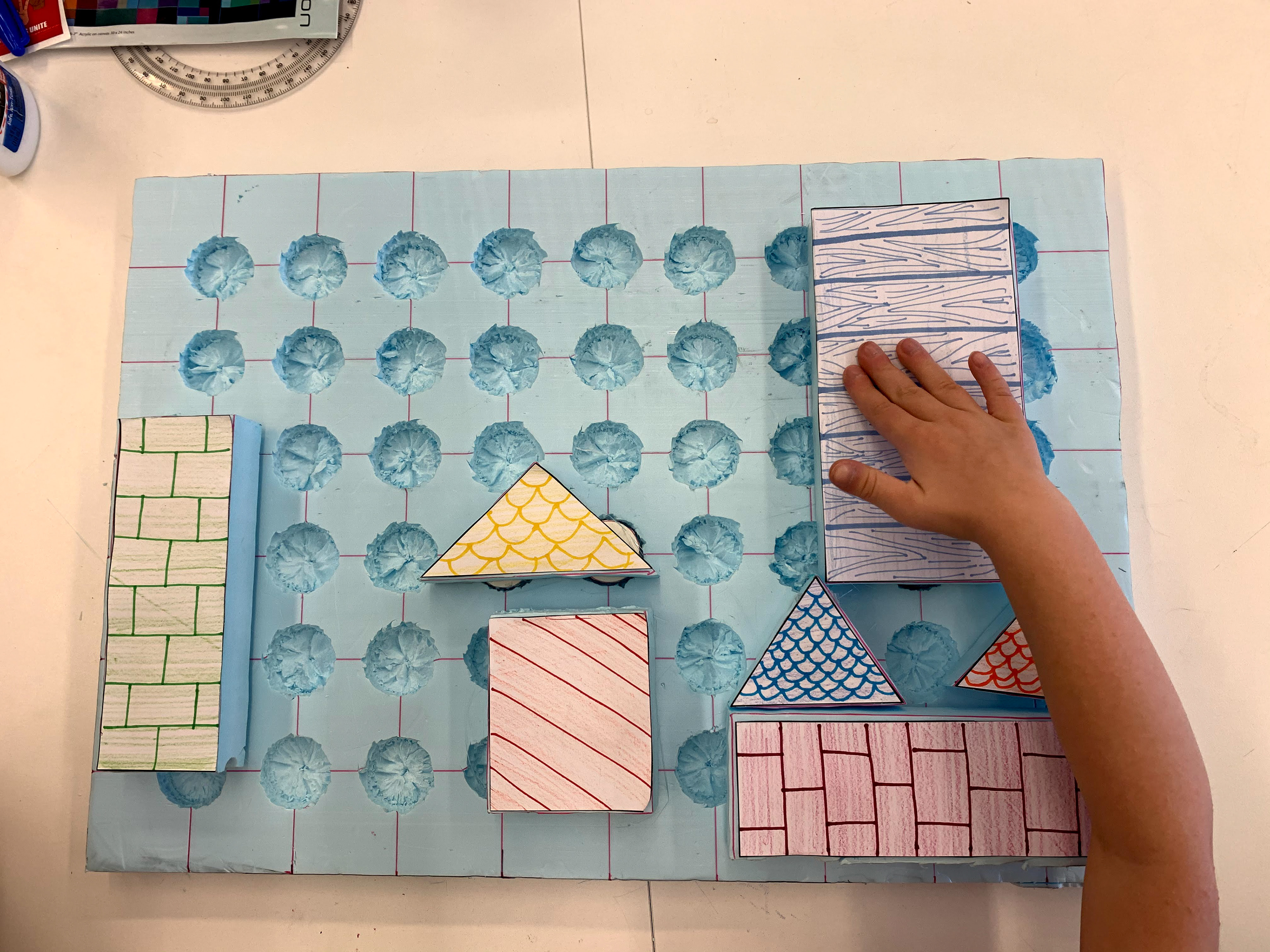
Figure 13: Kids' Designs
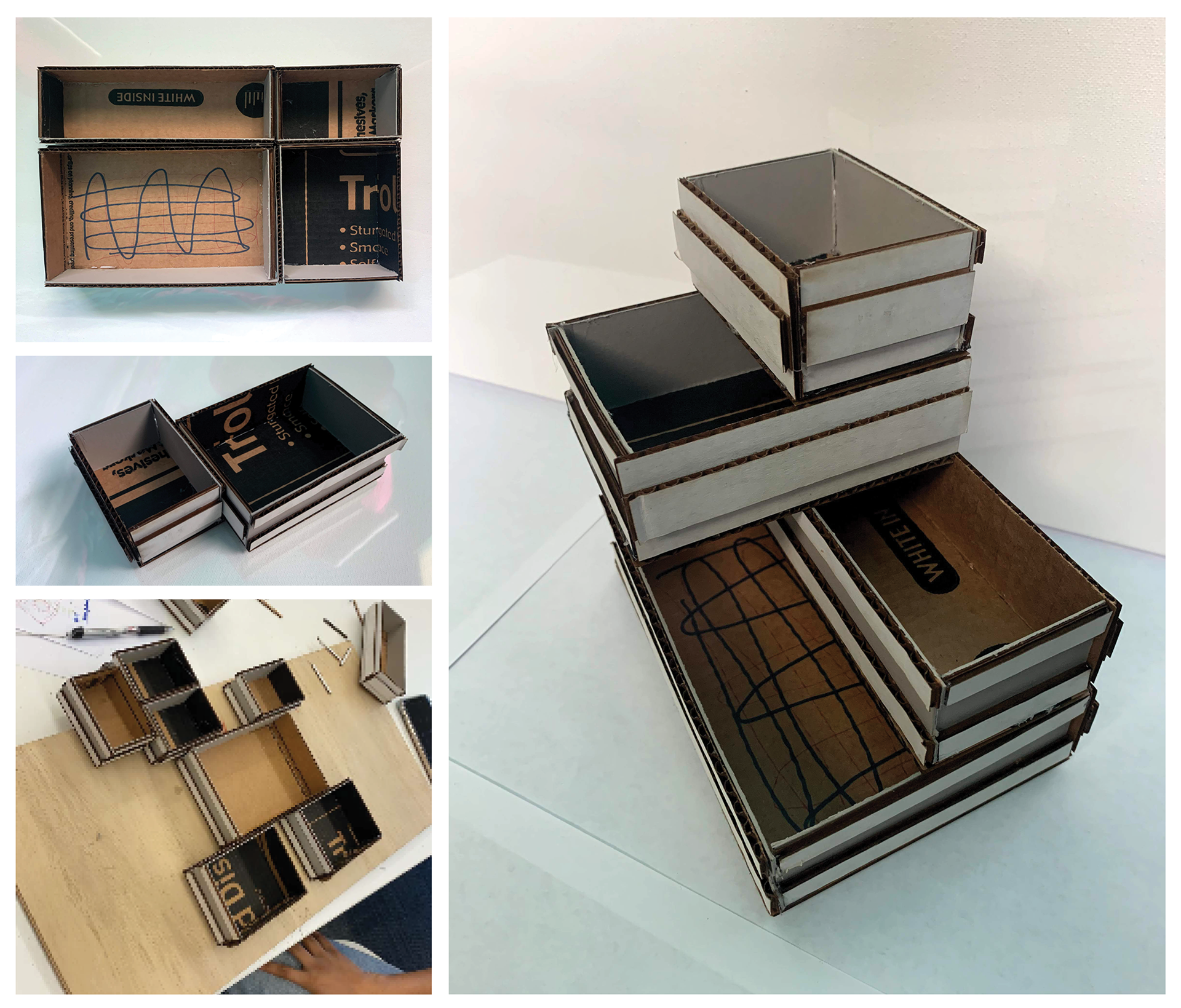
Figure 14: Prototype 2
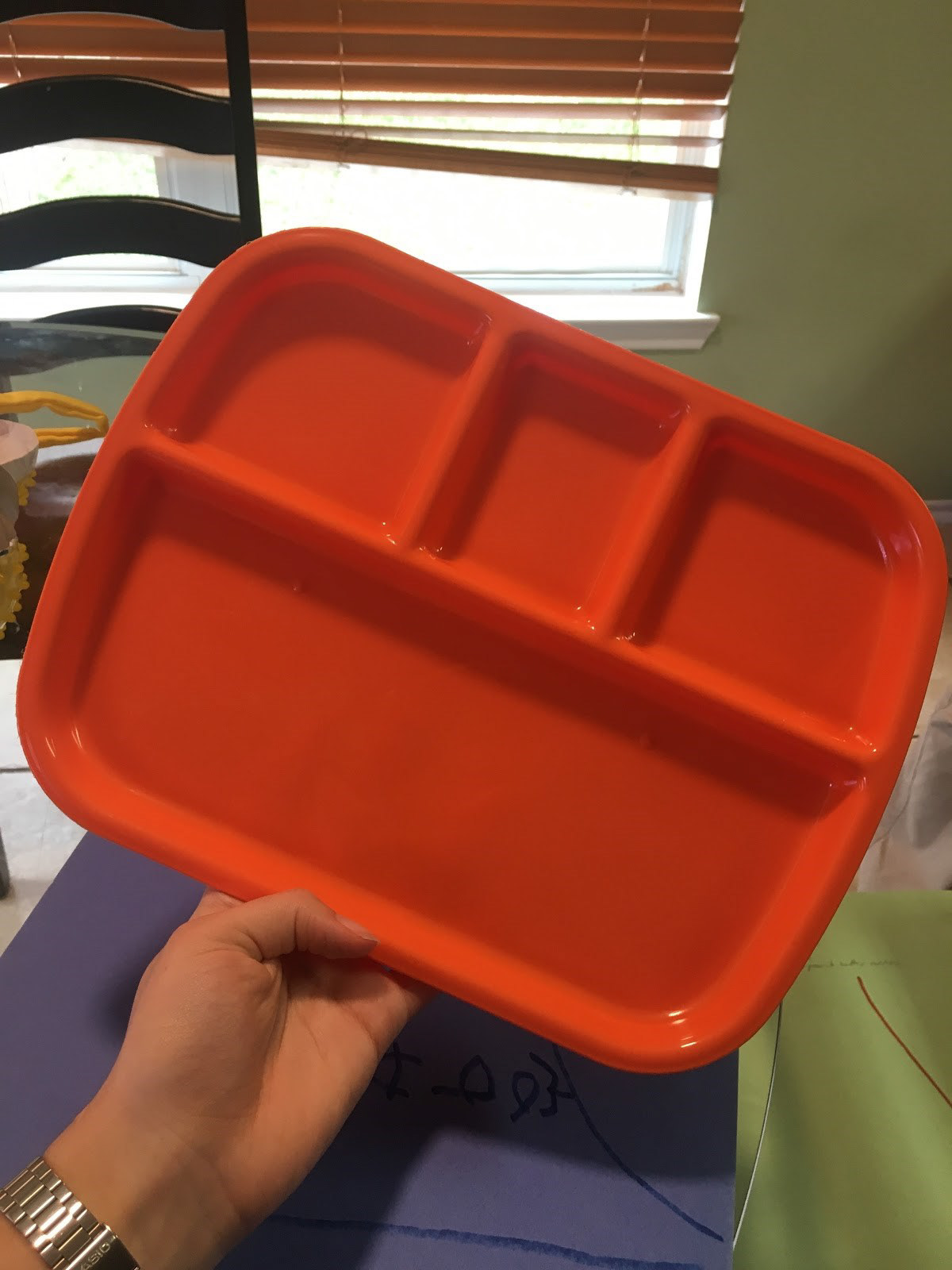
Figure 15: Toddler Plate
Final Product
Stacks, an interactive dining set that aids in food tolerance training at home during meal times.
Each family member will get the same set of plates at dinner time. New foods will be introduced on the small purple plate. Once the food is eaten, plates may be stacked and placed to create various sculptures. Stacks aspires to make food tolerance enjoyable for the entire family.
NUMEROUS CONFIGURATIONS

House
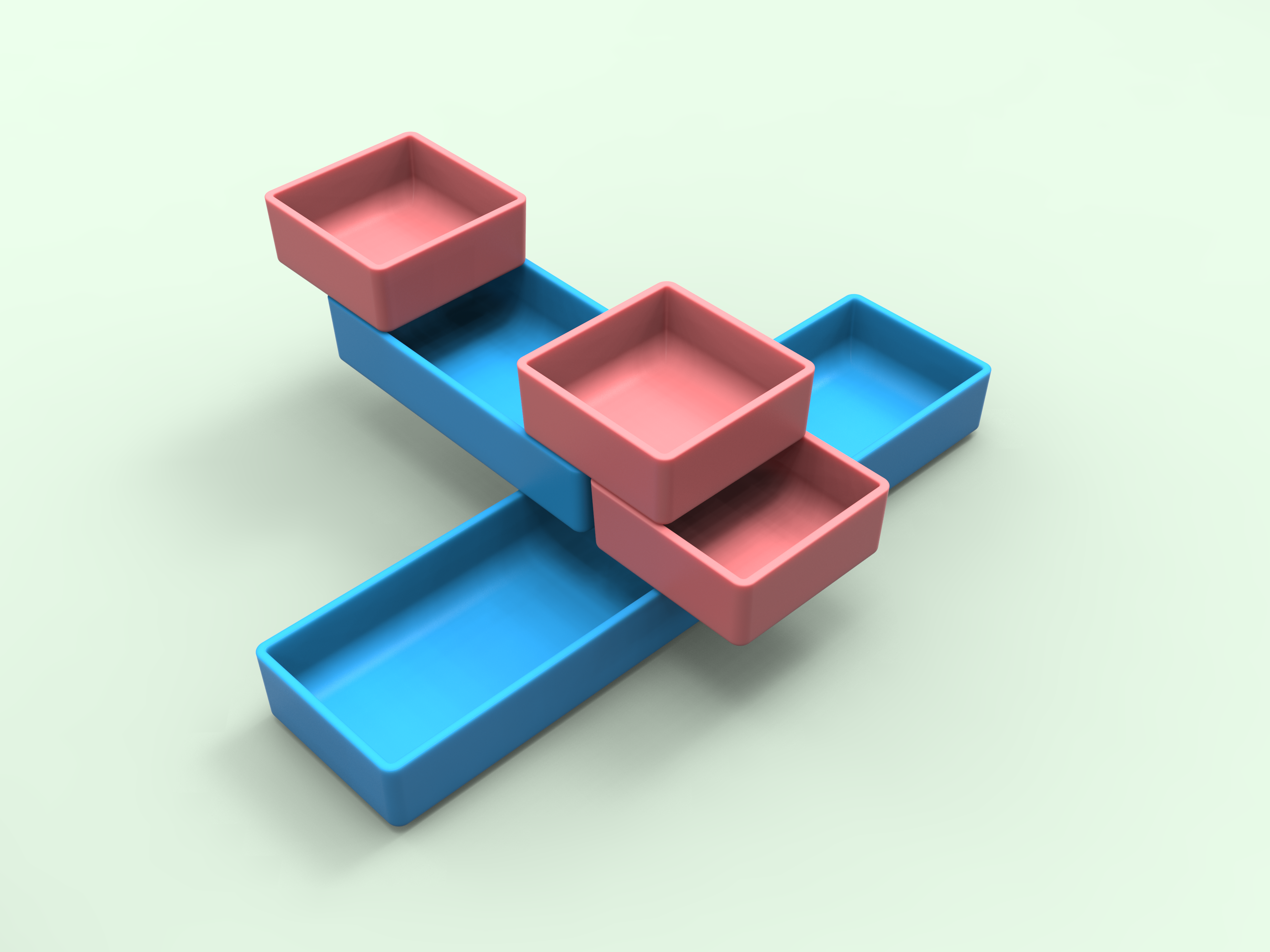
Plane
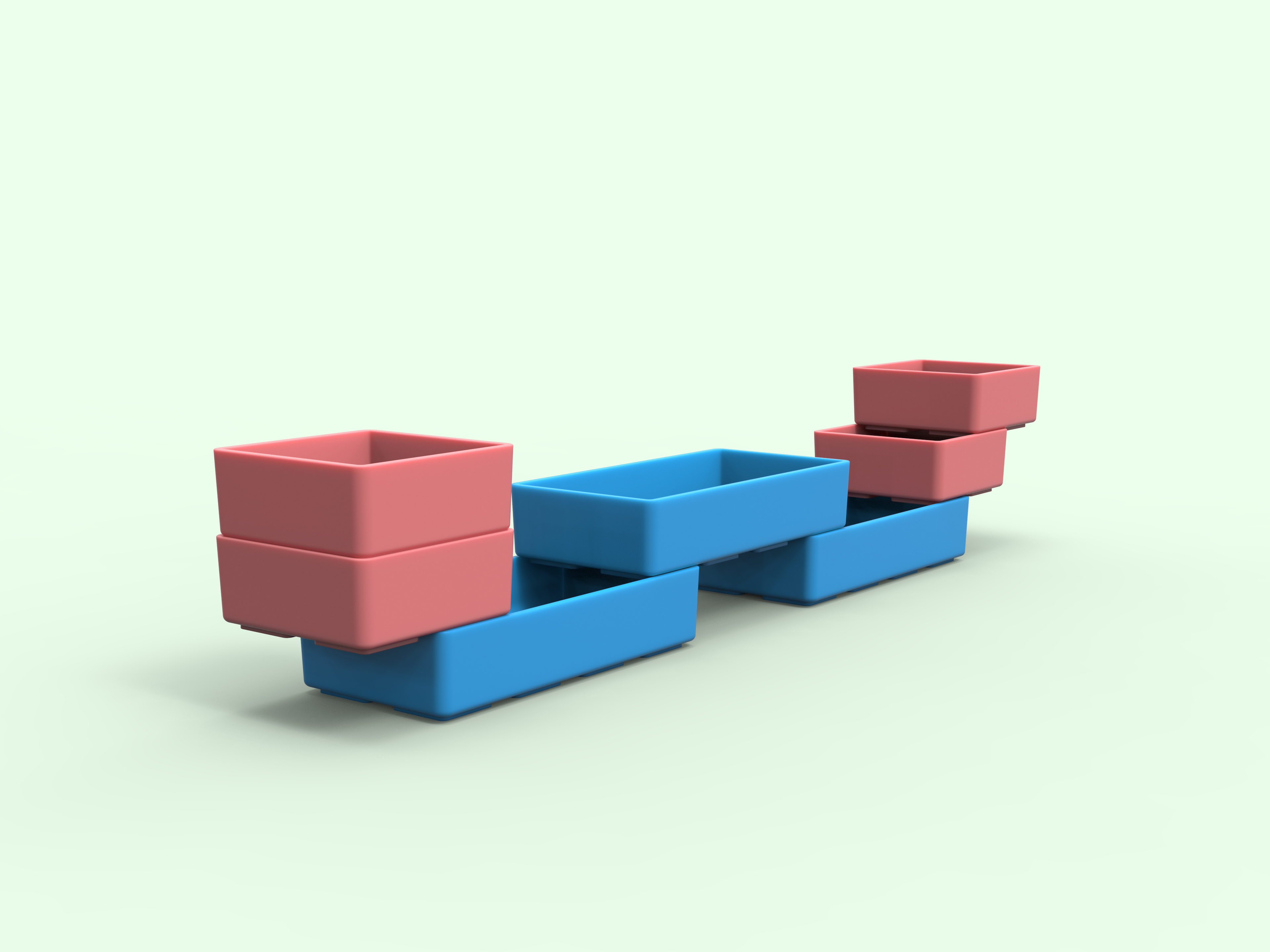
Snake

Flower
PLATE VARIATIONS
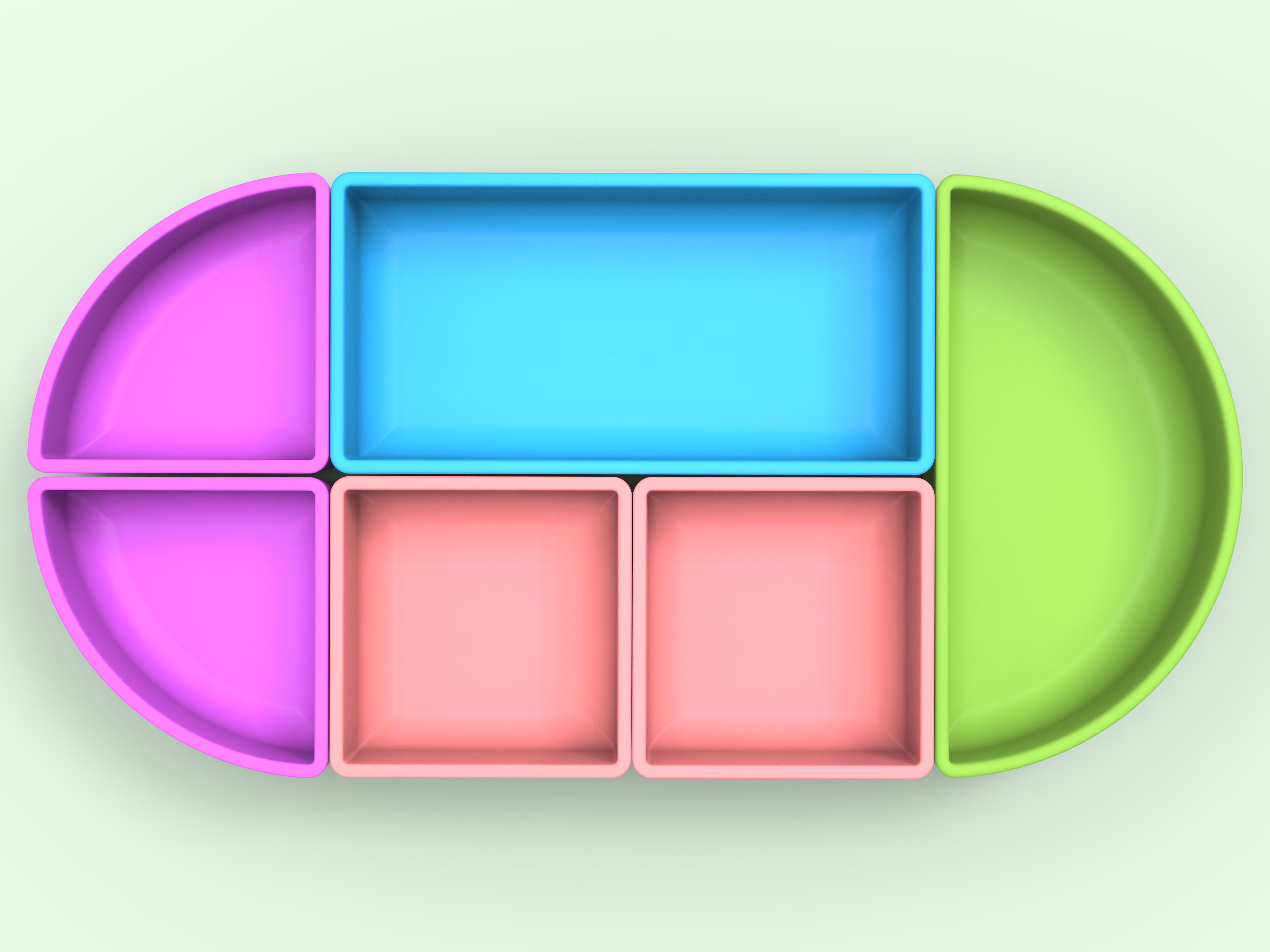
Full Meal Plate
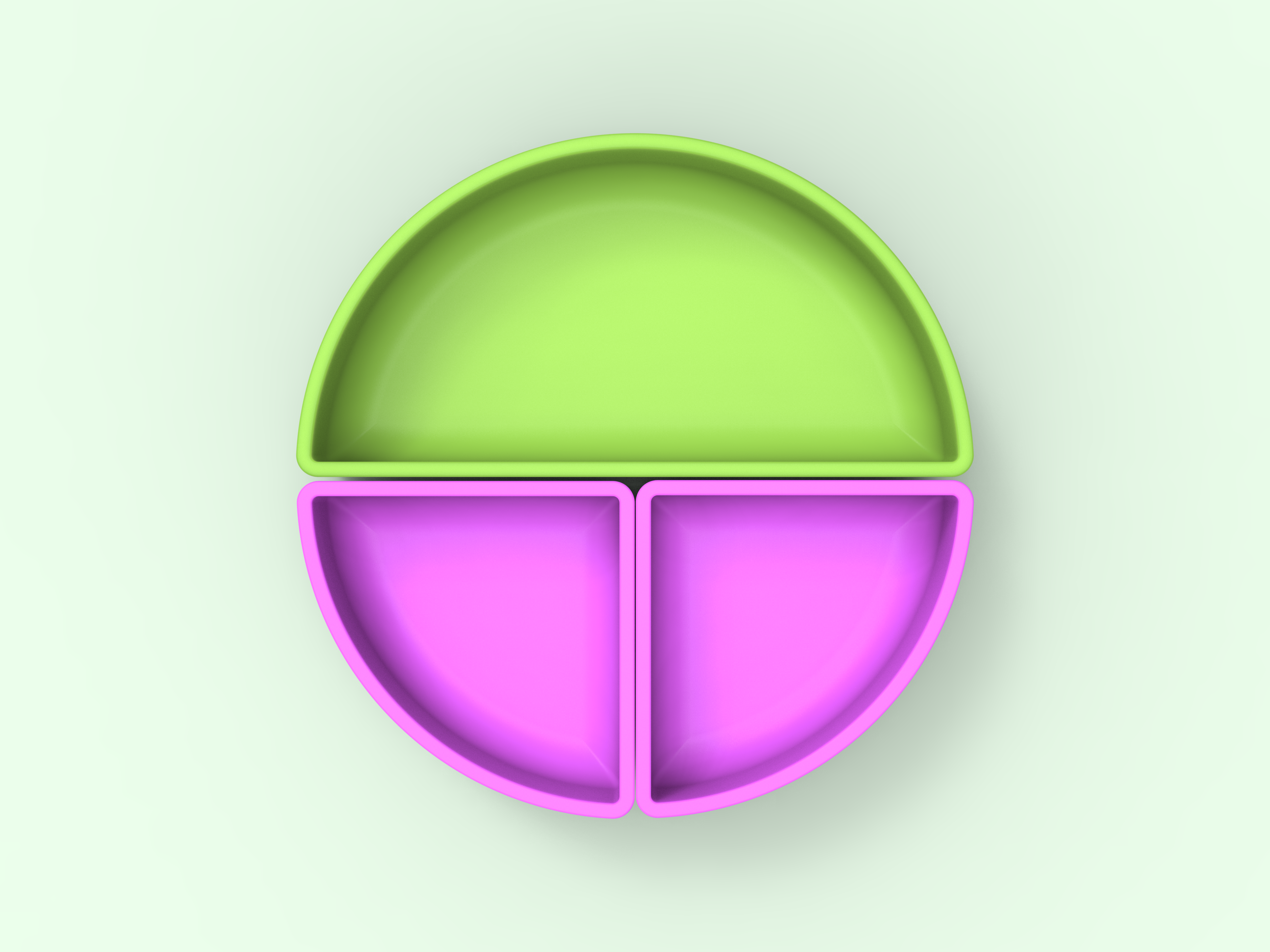
Snack Plate
Stack for convenient storage.
